26 April 2023
How to Find and Visit New Zealand War Graves
Commonwealth War Graves commemorates just under 30,000 New Zealand casualties of the World Wars. Learn their stories and how you can find New Zealand war graves with us.
New Zealand war graves
New Zealand’s involvement in WW1
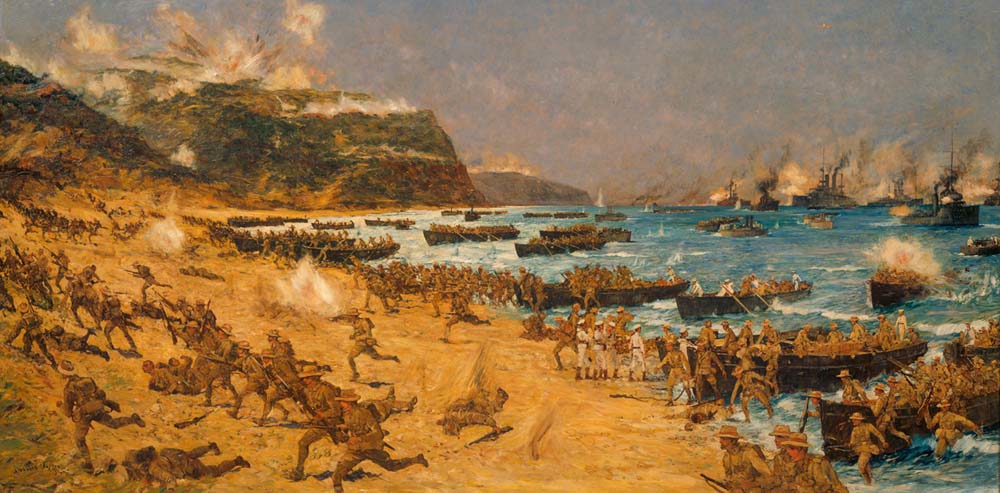
The Landings at Gallipoli, 1915, Charles Dixon, 1916 (Wikimedia Commons)
Alongside their Australian cousins, New Zealanders fought with distinction in World War One. Together, they formed the Australia and New Zealand Army Corps, aka the ANZACs.
Around 100,000 New Zealand service personnel served in the Great War. At the time the conflict broke out in 1914, New Zealand’s population was just 1.1 million, meaning around 10% of the country went to war.
Those who joined the New Zealand Expeditionary Force (NZEF) weren’t just of European extraction. The New Zealand (Māori) Pioneer Battalion in 1915. By the war’s end, more than 2,700 Māori and Pacific Islanders had fought on battlefields all over the world.
Ormond Burton, a decorated veteran of the Gallipoli Campaign, said of New Zealand’s war experience that “somewhere between the landing at ANZAC and the end of the Battle of the Somme, New Zealand very definitely became a nation”.
Where did New Zealand troops fight in World War One?

Kiwis wade ashore during the 1915 Gallipoli Landings (Wikimedia Commons)
The first New Zealand action of the war came in 1914.
1,350 soldiers of NZEF captured German Samoa in August. This was the second piece of German-held territory captured by the Allies in the war.
New Zealand’s war journey takes them across the globe. This is reflected in the various locations of New Zealand war graves we commemorate here at the Commonwealth War Graves Commission.
The NZEF was stationed in Egypt in 1915 with troops intended to fight the Ottoman Empire in the Middle East.
The first clash between these nations came shortly after the Kiwis had landed in Egypt in February 1915 when a force of New Zealanders fought off an Ottoman attempt to capture the important Suez Canal.
For the ANZACs, their defining battle of World War One is The Gallipoli Campaign.
The New Zealanders landed with their Australian counterparts in the multinational amphibious landings on the Turkish coast near the Dardanelles on 25th April 1915.
During the gruelling campaign, 8,000 New Zealand, Māori, and Pacific Islanders, lost their lives – a shocking proportion of the nation’s Great War total casualties.
Gallipoli has gone down in the national history of New Zealand. It was a nation-building moment for the small country.
Every year, on the 25th of April, ANZAC Day is held
New Zealand troops, including mounted regiments, would serve and fight in key engagements against the Ottoman Empire throughout the Middle East. They contributed to major battles and victories in the Sinai Peninsula, Palestine, and modern-day Israel.
New Zealanders on the Western Front
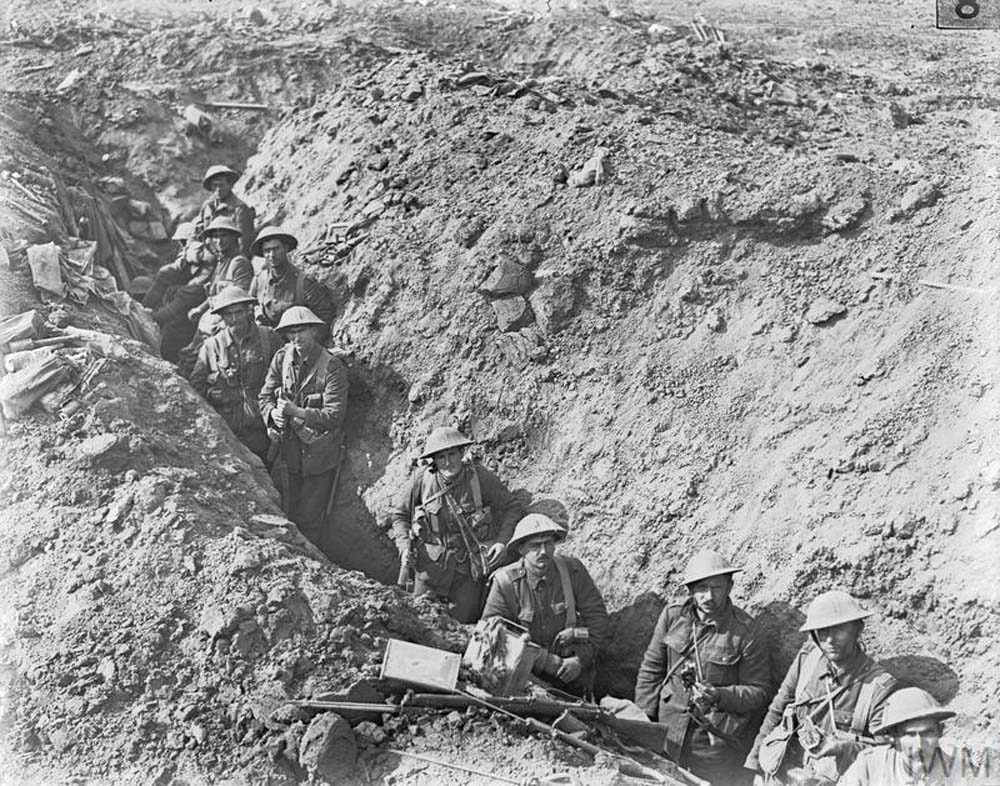
New Zealand troops during the Battle for the Somme, September 1916 (© IWM Q 194)
If you search for our cemeteries and memorials commemorating ANZAC troops on the Western Front, you’ll notice names from New Zealand crop up time and again.
War graves commemorating New Zealand troops can be found throughout France and Belgium.
The New Zealand Division composed of the 1st, 2nd, and 3rd (Rifle) Brigades, was formed in March 1916. Their commanding officer was Major-General Sir Andrew H. Russell.
April 1916 saw New Zealanders deployed to the Western Front.
Part of their unit was the New Zealand Tunnelling Company. These men greatly expanded the tunnels beneath the key city of Arras, helping undermine German positions near the northern French city.
18,000 New Zealanders went into battle during the Battle of the Somme in July 1916. Nearly 7,000 men were wounded while a further 1,500 were killed in the bloody 5-month campaign.
New Zealanders continued to be involved in some of the most dramatic, bitter, and bloody actions on the Western Front.
Major French and Belgian battles involving New Zealand troops include:
- Messines Ridge – Between 7th- 9th June 1917, the New Zealand Division took part in the capture of Messines Ridge: an area of strategically important high ground in West Flanders Belgium. The Kiwis achieved all their objectives but were forced to withdraw following a ferocious German artillery counterattack with 700 men killed.
- Passchendaele – The Third Battle of Ypres, aka Passchendaele, took place in October 1917. It was a particularly brutal affair. Men were fighting the elements as well as the enemy, with thick cloying mud and torrential rain turning battlefields into quagmires. The New Zealand Division lost 320 men during its attacks as part of the Battle of Passchendaele.
- Bellvue Spur – 12th October 1917. As part of the Passchendaele offensive, the New Zealanders are tasked with capturing a piece of high ground called Bellvue Spur. The assault is a disaster, resulting in 3,700 casualties. 970 Kiwis were killed. Bellvue Spur is referred to as New Zealand’s blackest day for the sheer loss of life on a single day.
New Zealand’s Involvement in WW2
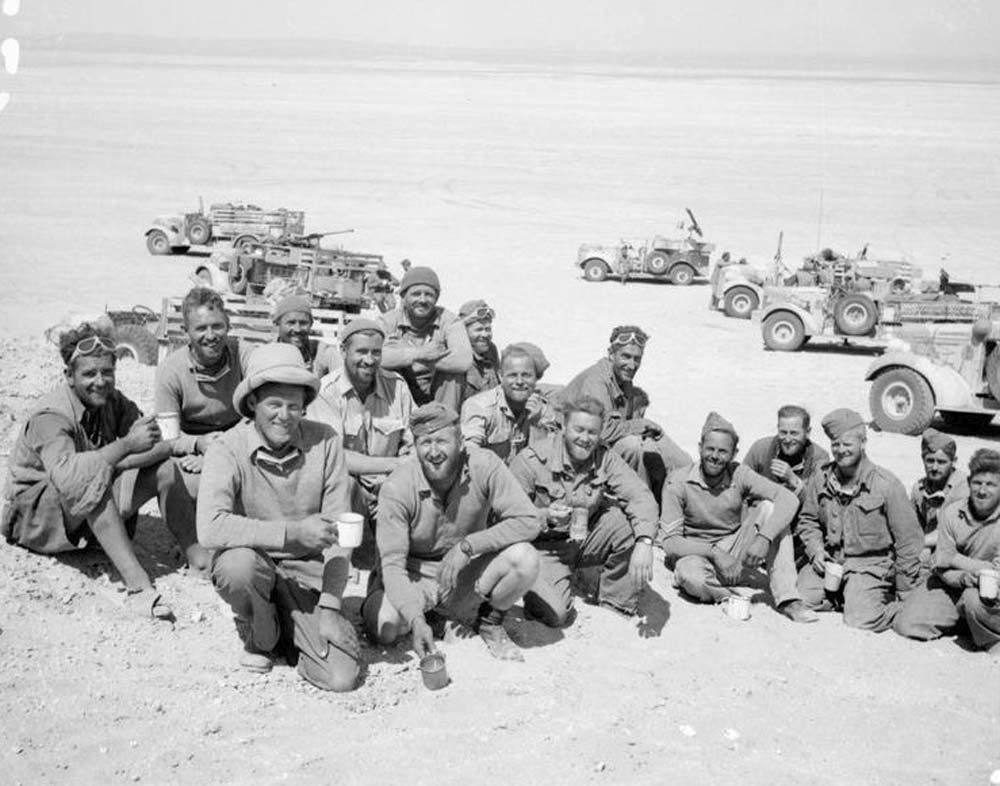
Kiwi members of the Long Range Desert Group pause for a spot of tea on the baking sands of North Africa (Wikimedia Commons)
The New Zealand war graves in our care are not just drawn from World War One.
New Zealand had an important part to play when war descended on the world once more in 1939.
In contrast to World War One, when it was obliged to enter the war as a Dominion of the British Empire, New Zealand declared war on Nazi Germany entirely of its own volition.
Kiwis were called up to serve on battlefields around the world. As such, we have many WW2 New Zealand war graves and memorials we maintain, reflecting New Zealand’s global effort during World War Two.
140,000 New Zealanders served in World War Two. Again, this included Māori and Pacific Islanders. In fact, the 28th (Māori) Battalion was the highest-decorated New Zealand unit of the war, including at least one Victoria Cross winner: Second Lieutenant Moana-Nui-a-Kiwa Ngarimu.
The first action of World War Two featuring New Zealand forces involved the Royal New Zealand Navy. The Kiwi warship HMS Achilles took part in the Battle of the River Plate in December 1939.
 Image: A Sherman tank supports Kiwi infantrymen during the Battle of Monte Cassino (Wikimedia Commons)
Image: A Sherman tank supports Kiwi infantrymen during the Battle of Monte Cassino (Wikimedia Commons)
From then on, Kiwis would serve on land, air, and sea, in locations like the UK, Italy, Norway, Greece, the Pacific, and North Africa.
For instance, the No. 75 (NZ) Squadron was formed by the RAF in April 1940. Kiwi pilots would take part in the Battle of Britain, defending the UK from Luftwaffe attack in one of the first decisive air battles of the war.
New Zealand units were deployed to Europe and North Africa. New Zealand troops played key roles in the first battles in the Desert, helping defeat the Italians alongside their British counterparts.
Between 1941-1943, New Zealand regiments proved a great asset towards victory in North Africa. This, however, came at a cost. Over 14,000 Kiwis were killed, wounded, or captured during the North African campaign. But still they served in great victories such as El Alamein in November 1942.
Italy proved a formidable battleground when the Allies invaded in the summer of 1943. New Zealanders would serve here, capturing German and Italian strong points atop craggy mountains, forging through plunging valleys, and fighting in picturesque towns and villages.
The most famous battle of the Italian campaign is probably the capture of Monte Cassino.
Capturing the old Benedictine monastery perched on a mountain was a bloody affair. Allied bombing had smashed the ancient site to ruins, allowing German defenders to hide in the rubble, and creating new strong points.
Over 340 New Zealanders were killed taking Monte Cassino. A total of 2,100 or so Kiwis lost their lives during World War Two.
Some of the most picturesque second world war graves holding New Zealand troops can subsequently be found in Italy.
In the Far East, New Zealanders went to war in Singapore, the seas around Japan, and the Solomon Islands. Between 1943-45, 200 New Zealanders lost their lives campaigning in the Pacific.
How many New Zealanders do CWGC Commemorate around the world?
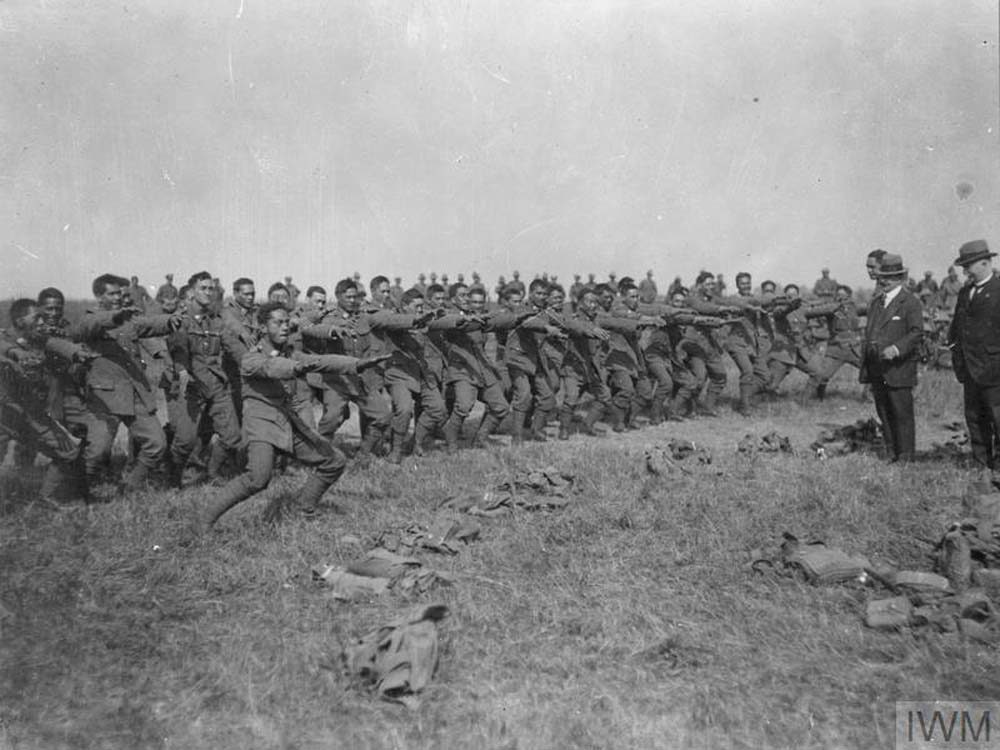
Māori troops perform a fearsome Haka on the Western Front (© IWM NZH 678)
World War One took a terrible toll on those Kiwis who served. The casualty rate, relative to the size of New Zealand’s population and the number who fought, was very high.
Over 18,000 New Zealanders were killed on WW1 battlefields. More than 41,000 were wounded or contracted illnesses during wartime too. Of the Māori and Pacific Islanders, more than 330 lost their lives. A further 734 were wounded.
Around 12,000 of these casualties were buried in New Zealand war graves. A further 6,000 or so went missing or had no known grave but the sea. Those without their own headstone and war grave are commemorated on CWGC memorials to the missing.
World War Two was less bloody for the Kiwis but the loss of life for a nation with a small population was still formidable.
We commemorate close to 12,000 New Zealand World War Two casualties at the Commonwealth War Graves Commissions. Their war graves can be found at home on New Zealand soil or close to the battlefields where they fell.
Again, any WW2 casualties with no known graves or those committed to the sea will be commemorated on our memorials.
New Zealand war graves in France
Just over 7,500 New Zealand casualties of the Great War are commemorated in France.
These are a mixture of those with war graves and others commemorated on memorials to the missing.
The sites containing the largest number of New Zealand war graves in France, or commemorating the largest number of missing soldiers, are:
- Caterpillar Valley (New Zealand) Memorial – 1,205
- Cite Bonjeans Military Cemetery, Armentieres – 452
- Grevillers New Zealand Cemetery – 446
- Euston Road Cemetery, Colincamps – 285
- Etaples Military Cemetery – 261

Caterpillar Valley (New Zealand) Memorial
The Caterpillar Valley (New Zealand) Memorial sits within Caterpillar Valley Cemetery. Over 5,500 Commonwealth burials are found in the cemetery, representing a mix of nationalities. However, the memorial is dedicated purely to just over 1,200 New Zealand casualties whose graves are not known.
Many of the casualties commemorated by the Caterpillar Valley (New Zealand) Memorial came from the New Zealand Division’s actions during the Battle of the Somme.
Kiwis arrived on the Somme in September 1916. By that time, fighting on the Somme had already claimed hundreds of thousands of lives.
From the 11th of September 1916, the New Zealand infantry fought for 23 consecutive days. They advanced nearly two miles, captured five miles of enemy frontline, over 1,000 prisoners, and multiple machine guns.
1,560 Kiwis were killed on the battlefields of Somme.
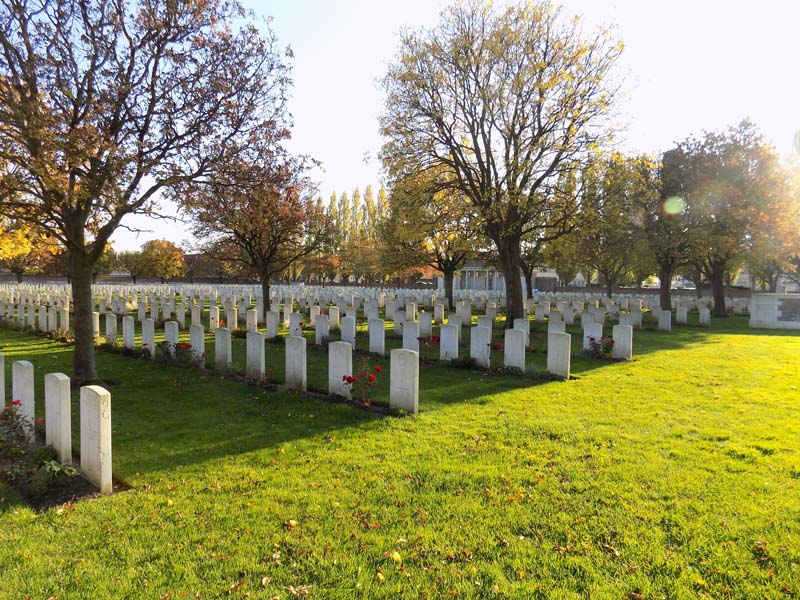
Cite Bonjeans Military Cemetery, Armentieres
The New Zealand Division occupied Armentieres in May 1916. This was known as a “quiet sector”. The heavy fighting along the Somme that erupted in July of that year took place elsewhere. The Kiwis were moved off Armentieres in August 1916, prior to going into battle in September.
The area was captured during the German Spring Offensive in April 1918. It wasn’t recaptured until 1918.
Up until its capture by the Germans, Cite Bonjeans Military Cemetery was used by various divisions and field hospitals to bury the dead. Today 2,625 Commonwealth soldiers are buried here. 452 of these burials are New Zealand war graves.
Cite Bonjeans also holds the Cite Bonjeans New Zealand Memorial within its rounds, commemorating 47 officers and men with no known grave.
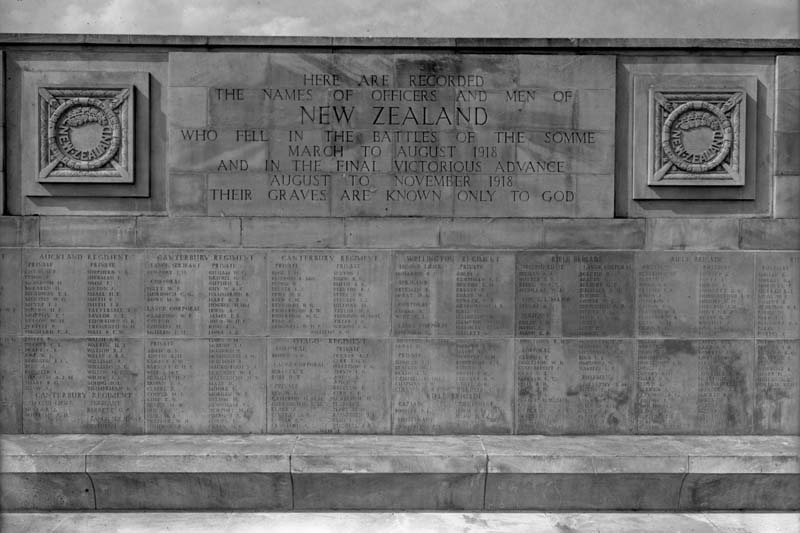
Grevillers New Zealand Memorial
As its name suggests, Grevillers New Zealand Memorial is dedicated to Kiwi casualties.
The memorial commemorates 448 World War One New Zealand casualties with no known war grave.
The memorial specifically commemorates officers and enlisted men of the New Zealand Division who died in the defensive fighting in the area from March to August 1918 and in the Advance to Victory between 8 August and 11 November 1918.
World War Two New Zealand war graves in France
Only a small proportion of the war graves holding New Zealand service personnel in France come from World War Two.
Of the 247 WW2 casualties, 238 are from airmen of the Royal New Zealand Air Force. Three war graves are dedicated to New Zealand Army Auxiliary Air Corps members. Others are civilian casualties or those who served in the Royal New Zealand Navy and Naval Reserve.
We have a single New Zealand Infantry casualty of World War Two buried in France.
The highest concentration of World War Two New Zealand war graves is at Choloy War Cemetery, featuring 14 burials.
New Zealand war graves in Belgium
4,633 New Zealand casualties of World War One are commemorated by Commonwealth War Graves in Belgium.
As we mentioned earlier, Kiwis fought in some of the bitterest and bloody engagements of the Great War fought on Belgian soil.
The Belgian sites commemorating the largest number of missing New Zealand servicemen or holding the largest number of burials are:
- Tyne Cot Memorial – 1,165
- Messines Ridge (N.Z.) Cemetery – 828
- Buttes New British Cemetery (N.Z.) Memorial, Polygon Wood – 378
- Lijssenthoek Military Cemetery – 291
- Tyne Cot Cemetery – 198
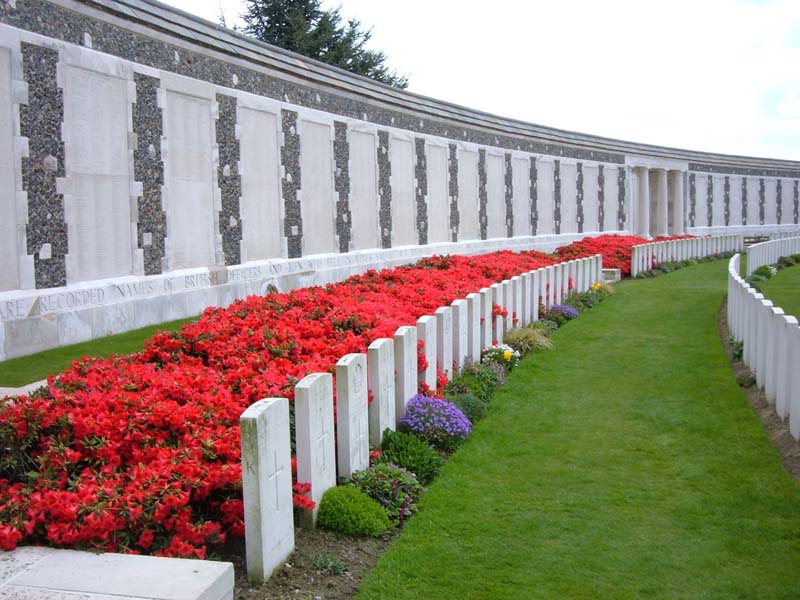
Tyne Cot Memorial
Tyne Cot Cemetery is the world's largest Commonwealth War Graves Commission cemetery. Nearly 12,000 Commonwealth personnel are buried here, including 198 WW1 New Zealand war graves.
Within its ground stands the Tyne Cot Memorial. 1,165 Kiwi soldiers with no known grave are commemorated on its walls.
Those Commonwealth and New Zealand soldiers commemorated on the Tyne Cot Memorial lost their lives fighting across the Ypres Salient. They fell after August 1917. Other missing New Zealand casualties who died before this date are commemorated on memorials elsewhere in Belgium.
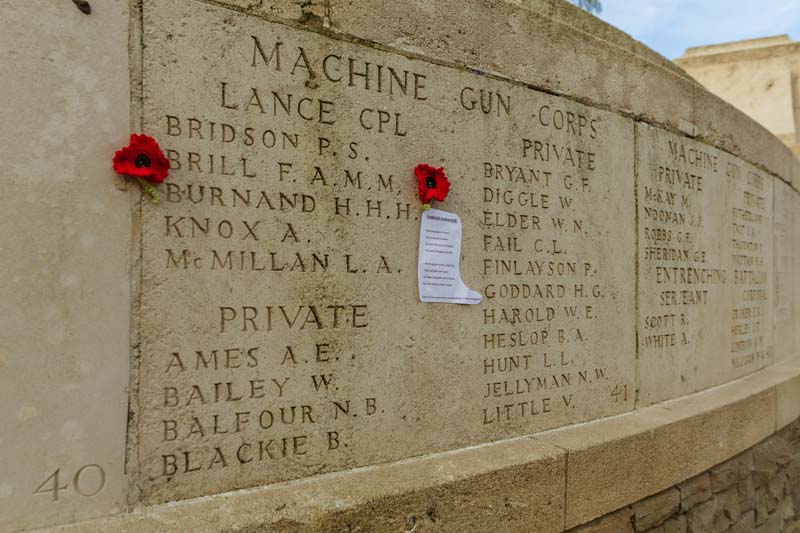
Messines Ridge (N.Z.) Memorial
As we touched on earlier, The New Zealand Division was part of the battles to capture Messines Ridge in June 1917. Over 700 Kiwis lost their lives in the attempt to capture and hold this strategically important piece of high ground.
Over 800 New Zealand Expeditionary Force soldiers who died in or near Messines in 1917 and 1918 and who have no known grave are commemorated on the Messines Ridge (N.Z.) Memorial.
The memorial itself sits within a Messines Ridge British Cemetery where a further 67 Kiwi burials of the Great War can be found.
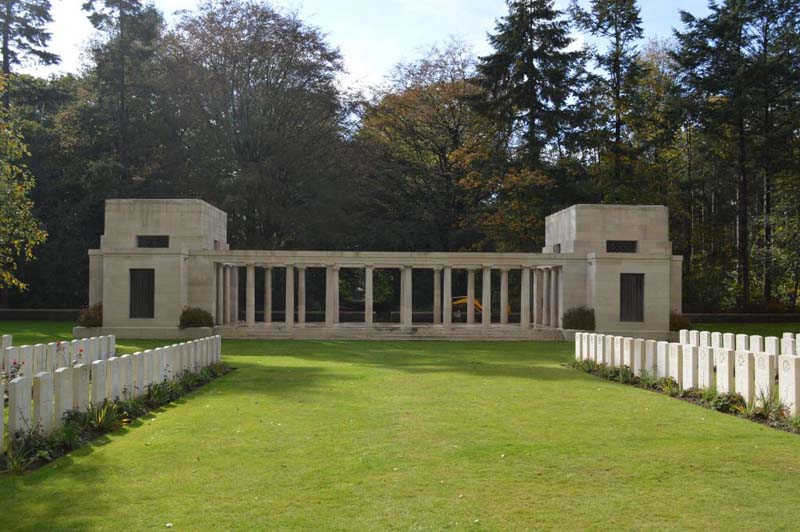
Buttes New British Cemetery (N.Z.) Memorial, Polygon Wood
Polygon Wood is a large wood south of the village of Zonnebeke which was completely devastated by the fighting in World War One.
The Battle of Polygon Wood was fought in September 1917. The area had been fought over several times since 1914, but the German forces realised its strategic potential and fortified it heavily. The woods were eventually captured in 1917 but at a cost of 20,000 British and Commonwealth lives.
The Buttes New British Cemetery (N.Z.) Memorial commemorates 378 New Zealand officers and men who died in the Polygon Wood sector between September 1917 and May 1918. These casualties have no known war graves.
WW2 New Zealand war graves in Belgium
All of the 79 WW2 New Zealand war graves under our care in Belgium are Royal New Zealand Air Force casualties.
These men either died in accidents or were shot down over enemy territory.
The single highest concentration of New Zealand World War Two Belgian war graves are located in Heverlee War Cemetery.
New Zealand war graves in Italy
The highest number of World War Two New Zealand war graves and burials can be found in Italy. 2,157 are buried or commemorated here.
Kiwi soldiers fought in one of the harshest European theatres the Western Allies fought in during World War Two. Italy, far from being the soft underbelly of Europe, turned out to be a nightmare of plunging valleys, soaring mountain peaks and horrendous weather.
German defenders were heavily dug in at river crossings, mountain strongholds, and general defendable positions. Allied casualties were high. What was hoped to be a quick campaign turned into a gruelling slog that lasted from 1943 to the end of World War Two in 1945.
The New Zealand forces in Italy fought in some of the most famous battles on the Italian mainland, including the aforementioned capture of Monte Cassino.
The locations holding the highest number of Italian New Zealand burials or commemorations are:
- Cassino War Cemetery – 456
- Sangro River War Cemetery – 355
- Florence War Cemetery – 243
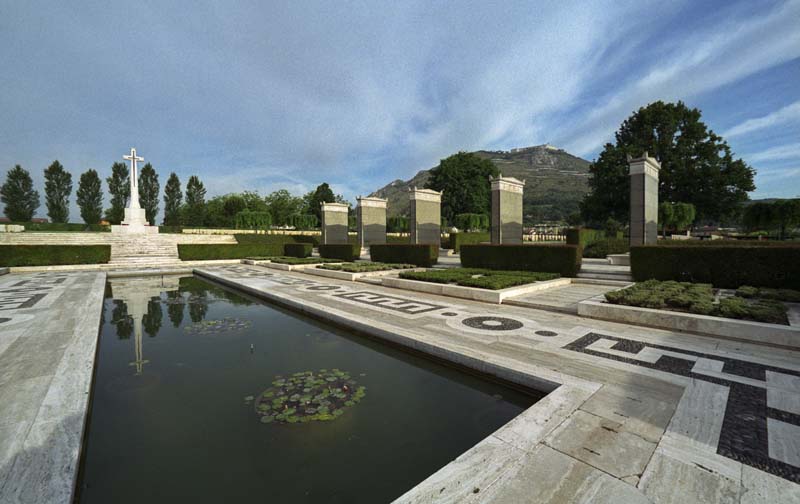
Cassino War Cemetery
The site for Cassino War Cemetery was originally selected in January 1944. However, as the battle for Monte Cassino rolled on, it was impossible to use the burial ground. It was only after the Germans retreated that Cassino War Cemetery could start accepting burials.
During these early months of 1944, Cassino saw some of the fiercest fighting of the Italian campaign, the town itself and the dominating Monastery Hill proving the most stubborn obstacles encountered in the advance towards Rome. The majority of those buried in the war cemetery died in the battles during these months.
456 New Zealand casualties are buried in the war graves at Cassino War Cemetery.
New Zealand war graves in Gallipoli
For the ANZAC nations, Gallipoli helped forge their national identities in the boiling cauldron of war.
The landings on 25th April 1915 saw New Zealand troops thrown into an infamous campaign that saw large loss of life for little gain.
The Gallipoli campaign resulted in 8,000 New Zealand, Māori, and Pacific Islander deaths. The final resting places of 2,347 of these soldiers are located near the landing zones and battlefields of Gallipoli.
The largest Gallipoli sites commemorating New Zealand war casualties are:
- Chunuk Bair (New Zealand) Memorial – 849
- Lone Pine Memorial – 709
- Hill 60 (New Zealand) Memorial – 183
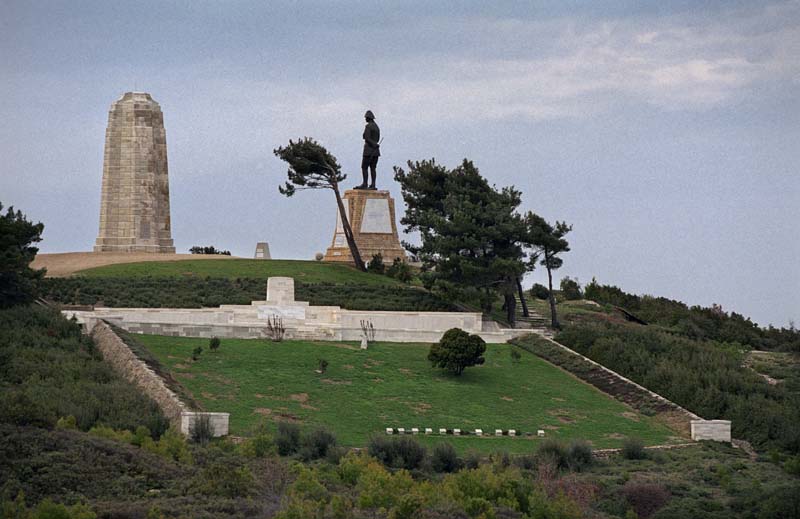
Chunuk Bair (New Zealand) Memorial
Chunuk Bair was one of the main objectives in the Battle of Sari Bair, fought 6th-10th August 1915.
Many Kiwi units were involved in the battle to capture this piece of high ground. The Māori contingent, New Zealand Infantry, and New Zealand Mounted Rifles all had a part to play.
Initially, the attack was good, forging up the hill, but determined and incessant Ottoman counterattacks eventually drove the New Zealanders from the hill.
The loss of Chunuk Bair marked the end of the effort to reach the central foothills of the peninsula and on this sector of the front, the line remained unaltered until the evacuation in December 1915.
The Chunuk Bair (New Zealand) Memorial is one of four memorials erected to commemorate New Zealand soldiers who died on the Gallipoli peninsula and whose graves are not known. It bears 849 names.
War graves in New Zealand
3,431 New Zealanders are commemorated by Commonwealth War Graves on their native soil.
1,726 of these casualties are from World War One. The remainder lost their lives during World War Two.
The highest concentration of commemorations or war graves in New Zealand can be found at:
- Wellington (Kaori) Cemetery – 377
- New Zealand Naval Memorial, Devonport, Auckland – 350
- Auckland (Waikumete) Cemetery – 264
Anzac Day – remembering the fallen of New Zealand
ANZAC Day is considered one of the most important national days in New Zealand.
It falls on the 25th of April every year, marking the date when New Zealand stepped into the crucible of war at Gallipoli alongside their Australian cousins and other Commonwealth troops.
The first ANZAC Day ceremony took place in 1916. Since then, it has grown to encompass the remembrance of all New Zealanders who have fallen in conflicts around the world.
ANZAC Day is marked by dawn ceremonies of remembrance in areas important to New Zealand’s war effort. Gallipoli is the focal point, but ceremonies are held around the world and at home.
At the CWGC we are proud to take part in remembrance services at our sites in the UK, Italy, and around the world to mark the fallen of Gallipoli and all ANZAC casualties in our care.
Visiting New Zealand – what you need to know
New Zealanders are buried in war graves all over the world. You can locate them using our handy search tools.
Use our Find Cemeteries and Memorials tool to track down the locations of our sites worldwide. Alternatively, you can use our Find War Dead tool and search by nationality and country commemorated in to discover their location.
Visiting information and maps are available on each cemetery or memorial page commemorating New Zealand service personnel.
If you’re looking to discover more about the New Zealand war dead we commemorate, our handy ‘How to Research’ guides will help you get started with you research journey.

